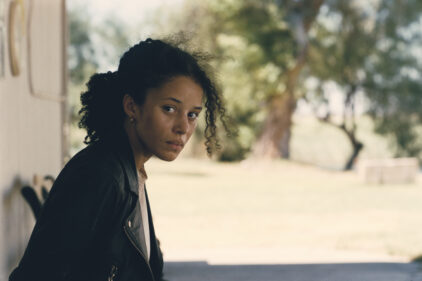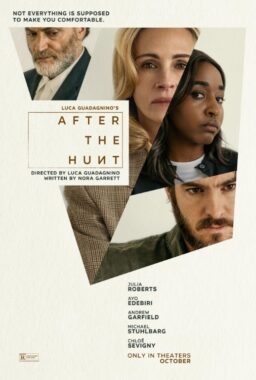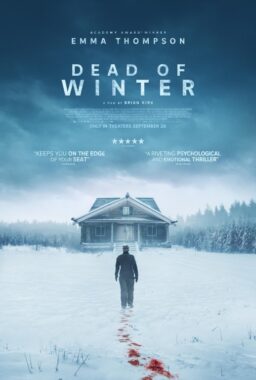Film festivals often elevate and celebrate young talent, especially those who are willing to walk the red carpet and wave to the cameras. Maybe it’s a product of my age advancing past the half-century mark, but my schedule this year tended to veterans more than usual, including reminders that people like Sir Ian McKellen, Bill Nighy, and Dustin Hoffman are legends for a reason. Luckily enough, all four of these “vet” projects were worth my diminishing time.
If one counts “Presence,” which premiered at Sundance in 2024 but wasn’t released until early in 2025, “The Christophers” marks Steven Soderbergh’s third project of the year. And it’s not just the quantity of work that’s been remarkable in this phase of the master’s career, but the consistently impressive range. “Presence” is a ghost story; “Black Bag” was a thriller; “The Christophers” is mostly a two-hander, a chamber piece that showcases two remarkably different performers unpacking themes regarding art, what it says about its creator, and, ultimately, who owns it. Ed Solomon’s script sometimes feels uncertain about what it’s trying to say, but Soderbergh’s film is so marvelously light on its feet (as so much of his work has been for decades now) that it becomes a joy to simply spend time with these smart, three-dimensional characters, embodied by two phenomenal performers.
Lori (Michaela Coel, doing her best work since “I May Destroy You”) is a frustrated artist herself, doing restoration work on what feels like a long break from actual creativity. She’s approached by the adult children (a perfectly whiny Jessica Gunning & James Corden) of a famous artist named Julian Sklar (McKellen), who has basically become a grumpy hermit since being canceled years ago. His home is practically an art museum, a collection of finished and half-finished works, including a set somewhere on the top floor known as ‘The Christophers,’ portraits of someone who was clearly important to Julian in an earlier chapter of his life. Julian’s kids have a proposition: Lori will get her hands on these paintings and “finish” them in Julian’s style, forging what would then be worth millions on his imminent death. She’s proven she’s able to mimic Julian’s style already—just get these works over the finish line, and she can keep some of the profits when his heirs inherit them.
Lori gets an assistant job with the irascible Julian, and the film becomes a series of conversations about the conflicting personal and public aspects of art. Painters like Julian Sklar pour part of themselves onto the canvas and then sit back while the world interprets it or misunderstands it. Late in his career, Sklar was a Simon Cowell-esque judge on a show that basically tore down young artists, playing into the stereotypes of the self-absorbed former star who uses their power to diminish anyone who might follow in his footsteps.
What works best about “The Christophers” is the interplay between the performances and characters played by McKellen and Coel, who come at each other with entirely different temperaments. McKellen’s Julian is unapologetically bitter, one of those guys who has torn down the wall that exists for most people between thought and speech. He expresses every cruel thought as someone whose opinion went from one of the most valued to one that society put in the attic, unfinished. Coel’s Lori is the opposite, a careful, cunning observer who has been shaped by insecurity. Watching these two actors bounce off each other as Lori and Julian slowly discover what they have in common, too, gives “The Christophers” an intellectual life and curiosity that movies too rarely seek these days. May Steven keep up this breakneck pace as long as he can keep delivering as consistently as he has lately.
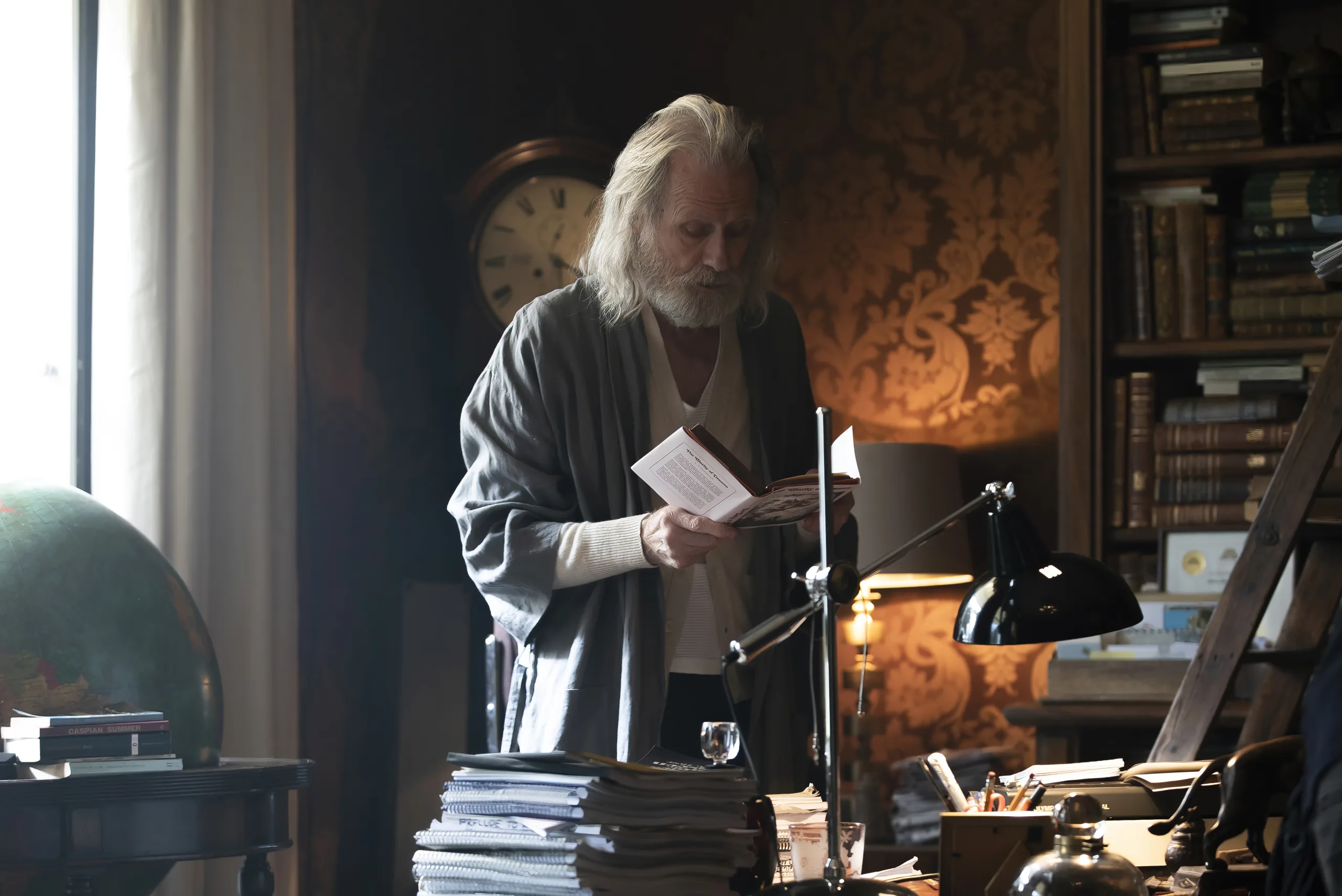
At first, Pablo Trapero’s “&Sons” feels like a companion to Soderbergh’s film. It too is about a famous creator in the final days of his life, and it too stars a legend as someone considering the damage they’ve done regarding family and fame. In this case, the legend is Nighy, who plays Andrew Dyer, one of the most popular sci-fi authors in the world, who hasn’t left his estate in two decades, living a miserable, introverted, drunk life with his third son, Andy (Noah Jupe). As the film opens, one of Andrew’s last friends has passed, and they’ve requested a eulogy from the famous writer, but Andrew basically has a panic attack at the funeral. Realizing that he’s almost out of time to come clean about his life, he invites his other sons, Richard (Johnny Flynn) and Jamie (George MacKay) to come home for a reckoning. He reveals something that sounds impossible to his three boys, which pivots “&Sons” into the territory of science fiction, although Trapero’s script (co-written by Sarah Polley) allows for enough ambiguity to wonder if this revelation is just a famous writer’s final conceit.
The “twist” of “&Sons” sucks up a lot of the oxygen in Trapero’s film. There’s something undercooked in how Dyer’s sons are frustrated creatives—Richard is working on a screenplay with an obnoxious producer played by Dominic West. At the same time, Jamie shoots everything in his line of sight because he’s a documentary filmmaker. The big picture of “&Sons” also feels a bit goofy, but it’s in the micro beats that the movie works.
Jupe gives his best performance to date as someone who actively refuses to walk in his asshole father’s footsteps, and Nighy uses a jittery physical language to convey a heart that’s deteriorating as much as his old body. But the movie belongs to Imelda Staunton, who does her best work to date as Andrew’s ex-wife, someone who reckons with the idea that everything she thought about the last chapter of her life was a lie. She has a scene when she meets Andy for the first time—he was the product of the affair that broke her marriage—and she does so much with her eyes that it becomes a master class. She’s looking at a young version of the man she fell in love with decades earlier. It’s breathtaking, and reason enough to forgive the places that “&Sons” stumbles.
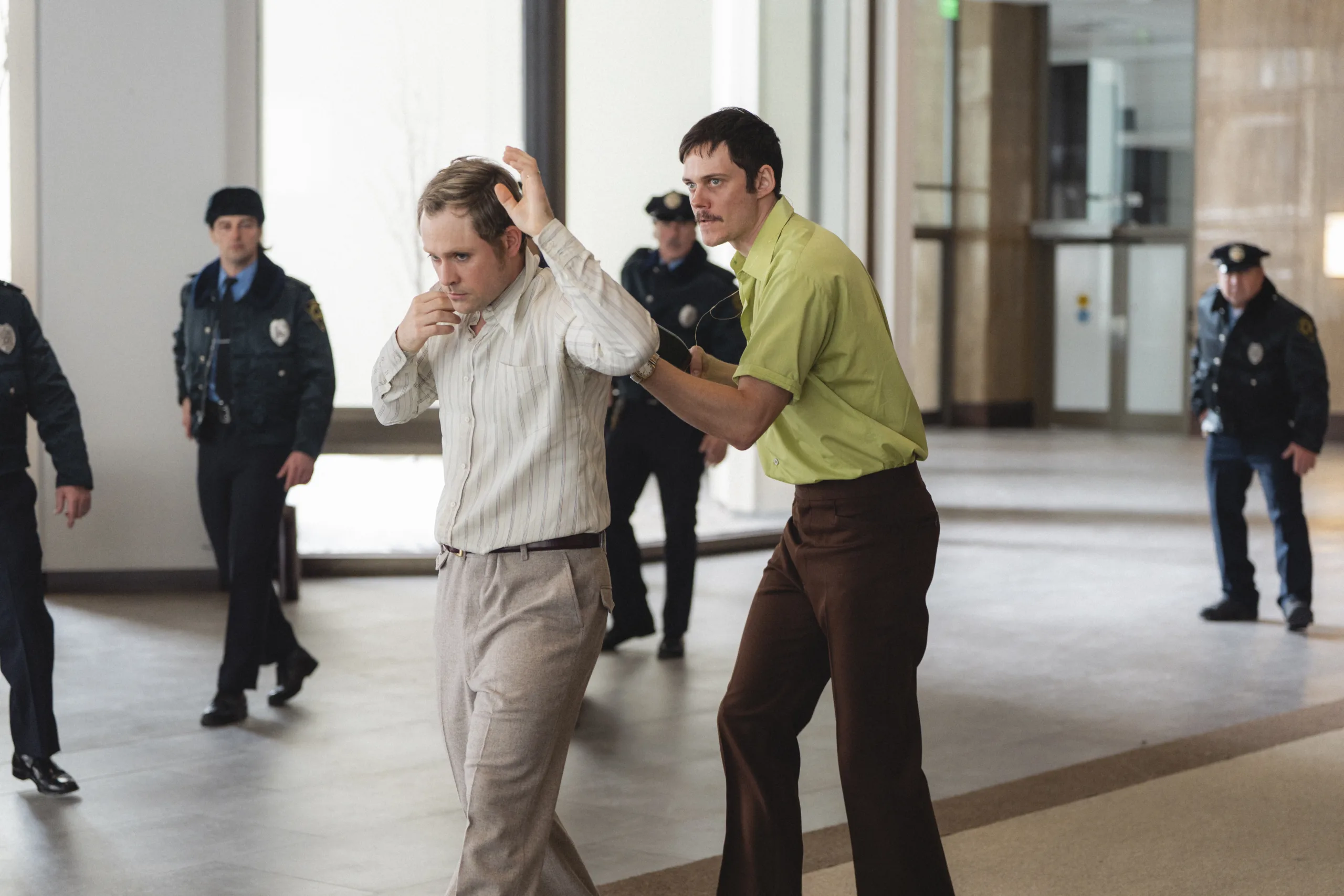
There isn’t a legend on-screen much in “Dead Man’s Wire,” rather the return of one behind the camera. Much of the buzz at Venice and Toronto surrounding this film centered on the fact that it’s great to have the renowned Gus Van Sant back on the filmmaking scene. After the disastrous “Sea of Trees” and mediocre “Don’t Worry, He Won’t Get Far on Foot,” Van Sant disappeared for seven years, doing mostly television. This riff on “Dog Day Afternoon” is a reminder of how solidly Van Sant can helm a movie like this, keeping it moving even as it goes through some relatively predictable beats. One could forget how often Van Sant has told true stories in projects like “To Die For,” “Milk,” “Elephant,” and “Last Days,” adding his own fingerprints to familiar tales. This isn’t anywhere near as formally daring as some of those films, but it’s consistently well-made in a way that reminds one how much competent filmmaking can be half the battle.
“Dead Man’s Wire” is the true story of Tony Kiritsis (Bill Skarsgard), an Indiana man who was so fed up with his bank mortgage that he kidnapped his son/employee Richard Hall (Dacre Montgomery) and tied a shotgun around his neck, connected to a wire that would set it off if Richard ran or even fell. He walked Richard out of his office, down the street, and to his apartment, where he held him hostage while he demanded money and an apology. Austin Kolodney’s script places some other prominent players around what probably should have been more of a two-hander, including Myha’la as a journalist trying to get the big story, Colman Domingo as a radio DJ who helps convey Tony’s message to the masses, and even “Dog Day” legend himself Al Pacino as Richard’s dad. Pacino is only given a few scenes as the irascible old man who seems content to let his son die instead of admitting to being a predatory loan shark, and he quite literally phones them in.
Much more effective are Skarsgard and Montgomery, who, much like the pair in “The Christophers,” work in harmony by being completely different personality types. Skarsgard is a live wire, jittery and unsettling. At the same time, Montgomery is marvelously subtle, eschewing the panic that other actors might have used to convey a quiet resignation, almost as if he knows he deserves some of this abuse. They’re both very good, a reminder that Van Sant is a pretty damn good director of performance, too. Welcome back, Gus. Don’t take so long to make another one.
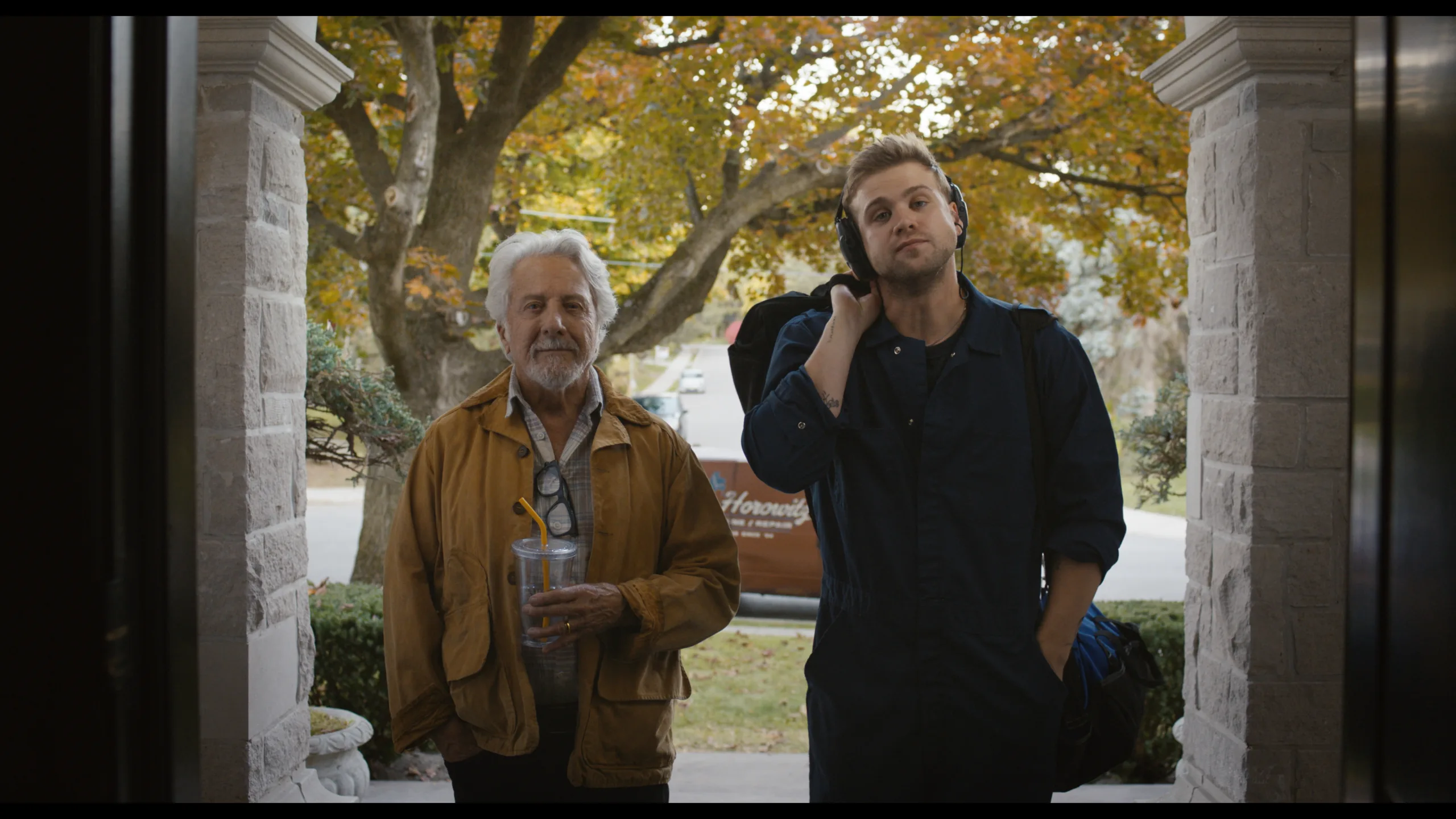
Finally, there’s the effective “Tuner,” the narrative debut of documentary filmmaker Daniel Roher, who won an Oscar for “Navalny.” The legend in this one is Dustin Hoffman as Harry Horowitz, although he steps aside relatively early to give the film to his right-hand man, the wily Niki White (Leo Woodall), in a piano tuning job. Harry is really just there to launch Niki on an unexpected career path when the old man forgets his safe combo.
Niki, who has a unique condition that makes him so sensitive to sound that he has to wear earplugs at all times but can also pick out any note played on a piano, takes the safe to open it for his friend, discovering that his attuned hearing makes him a pretty solid safe cracker. The discovery leads him into the criminal underworld, where he serves as the security expert for a company that essentially skims the top off its ultra-wealthy clients. His new boss argues that these people are too rich to notice when a watch or necklace is missing from a safe. Don’t take it all, and no one will realize you’ve taken anything until it’s too late.
At the same time that Niki is sliding into a criminal underworld that anyone who’s seen a movie knows is going to end poorly, he meets a pianist named Ruthie (the always wonderful Havana Rose Liu), who doesn’t know about his new hobby, but does start to wonder how he can afford increasingly expensive presents. “Tuner” sometimes feels overly predictable in its “rookie criminal who falls in love” arc, but Roher successfully makes the transition from documentary filmmaker to thriller director. If anything, he almost surprisingly leans into the clichés of the genre, whereas most non-fiction filmmakers feel a little restrained and dry when they try to make that leap. It helps to have ace editing from Greg O’Bryant, work that gives “Tuner” its metronomic pace, keeping us connected to the rhythm of the piece enough to ignore its familiarity in the name of well-done entertainment.



